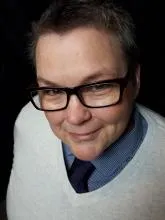Looking to brush up your writing skills or learn a new trick or two? You've come to the right place! Check back weekly for helpful tips and articles that make your writing better.

One of my biggest struggles as an emerging writer was understanding the concept of a scene and how it differed from the overall events of the book. After all, if I plotted the beats* in my novel, wouldn’t each scene naturally fall into place?
Short answer: No.
If you rely only on your outline to establish the overall arc of your story, you’ll end up with a lot of transition scenes — long pages of people walking, talking, looking at the scenery, maybe, without any real sense of conflict, tension, or overall plot arc.
In this series, I’ll first talk about what a scene is and how to tell when a scene begins and ends. In the next post, I’ll go over how to write excellent scenes.
What is a scene?
First, what the heck is a scene and why is it so hard to define?
A scene is basically a mini-story containing a small arc. You connect your scenes together to create an overall arc for your story. Put more simply, a scene involves a setting, a character, an action or reaction, and a time. When one of these changes—e.g., a character enters or leaves, the setting changes, or it’s the next day, you’ve moved to a different scene.
Where scenes begin and end
For example: you have a scene where two characters are burning evidence in a fireplace. A third person walks in and catches them in the act. The moment the third person enters, that's a new scene.
Conversely, if you start your scene when the third person walks in and find two people burning evidence in a fireplace, this is all one scene, because it starts with that three-person dynamic and continues that way.
Parts of a scene
A novel consists of a beginning, a middle, and an end. A scene also does so, but in a way that contributes to the overall arc of the larger work. That means each scene will probably contain some variation on conflict, options, and resolution or non-resolution. Conflict is generally created by making your character want something and then stripping that away.
In my blog post on plotting, I talk about the importance of knowing your characters’ goals. In individual scenes, your character(s) will also have goals, otherwise, there's no need for the scene.
Maybe your evidence-burning characters want to get rid of papers that incriminate them in a horrific crime. Their goal is escaping undiscovered, avoiding prison, or possibly even staying alive. You can either resolve their problem by allowing them to successfully burn the evidence before the third person enters or mess up their plans by having the third person discover the plot. Either way, the third person ends the initial scene and starts a new scene in which the characters have a new goal—perhaps to get rid of the third person, or somehow convince them of their innocence.
When you start looking at each scene as a way of establishing conflict and thwarting the characters’ goals, you inevitably build tension and conflict in your larger work. Understanding the components of a scene enhances the overall richness of your work, which always leads to great reader enjoyment.
---
*Helpful vocab:
Beats are the standard elements of a story that help build the plot structure, such as the introduction, the inciting incident, the call to action. Scenes are individual units of action, conflict, and change.
⤟ backstory ⤠
September 2025
August 2025
July 2025
May 2025
April 2025
March 2025
February 2025
January 2025
December 2024
November 2024
Copyright © 2025. All rights reserved
StoryBilder and the StoryBilder logo are trademarks of StoryBilder, Ltd.










